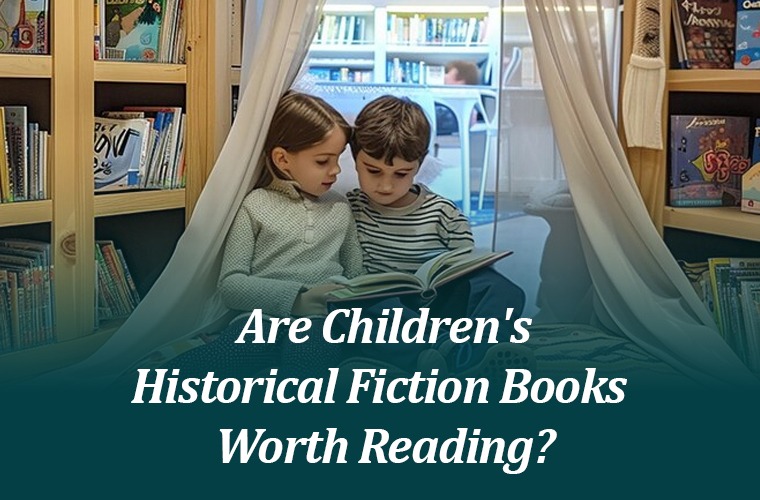You know, after all the years I’ve spent wrestling with words, trying to breathe life into characters from long ago for young readers, I’ve come to realize something pretty fundamental about children’s historical fiction books. They’re not just about dates and battles, not to me anyway. They’re about those little moments that make history real, the way someone might have felt holding a precious belonging, the fear in their belly during a time of upheaval, the simple joy of a shared meal in a different era. That’s the stuff that sticks.
And God knows, over the years, I’ve had countless conversations with parents and teachers, all trying to figure out the secret sauce for getting kids excited about history through children’s historical fiction books. They ask such thoughtful questions, the kind that make you really think about why these stories matter. So, pull up a virtual armchair, and let’s have a good old chinwag about some of the things I’ve learned along the way.
Ready to polish your children’s historical fiction book for publication? Get in touch with us.
My Two Cents on Children’s Historical Fiction Books
So, what’s the big deal with children’s historical fiction books? Why not just stick to the facts?
Well, the facts are important, no doubt. But facts alone? They can be a bit… dry, can’t they? Like trying to eat crackers without any cheese. Children’s historical fiction books are the cheese! They give those facts flavor, context. They let kids walk in someone else’s shoes, even if those shoes are centuries old. They feel the prickle of fear during a dangerous journey, the excitement of a new discovery. That emotional connection? That’s what makes history stick. That’s what makes it matter. I’ve seen kids who yawn through history class suddenly devour a historical fiction book. It’s like magic, almost.
Is there a “right” age to introduce children to children’s historical fiction books?
Absolutely. It’s really about meeting kids where they are. For younger children, that might mean sharing a picture book with rich illustrations and a gentle story set in the past, something simple that shows what life was like. As they get older and start to grasp more, you can offer stories with deeper plots and more layered characters, helping them connect with history in a more meaningful way. The trick is to match the book to the child. You wouldn’t hand a first grader a hefty tome about the Tudors, would you? Find those stories that spark their curiosity, that speak to their current interests.
What are some tricks for really getting kids engaged with children’s historical fiction books?
Oh, there are a few! Don’t just leave them to it. Chat about the cover art, what mysteries does it hint at? If there’s a map, trace the journey together. While you’re reading, stop and ask, “What do you think that felt like?” or “Why did they do that?” Encourage them to be little detectives of the past. And if you ever get the chance, a visit to a historical site related to the book can be absolutely transformative. Suddenly, it’s not just words on a page anymore; it’s real.
How accurate are children’s historical fiction books, really? Should we be worried about them getting the wrong idea?
That’s a fair question, and one I take seriously as an author in this field. We do our homework, believe me. We pore over research to get the details right. At the end of the day, what we authors really are is storytellers. We’ve got to spin a yarn that grabs you, that keeps you turning those pages. And sometimes, to make that happen, you have to, well, let’s just say the strict, nitty-gritty facts might get nudged a little here and there, or maybe woven together in a way that makes the story sing. It’s all in service of making that past world feel real and alive for the reader, especially for young ones. The best of us will always include an author’s note, explaining what’s real and what’s been imagined. It’s a chance to have a really interesting conversation with your child about how history inspires fiction.
Where do you even start looking for good children’s historical fiction books? It feels like there’s so much out there.
It can feel overwhelming, I know! But think of your local librarian as your guide in this wilderness. They are absolute goldmines of recommendations. Independent bookstores often have curated selections too, put together by people who truly love these books. And don’t be shy about asking other parents or teachers what their kids have enjoyed. Look for authors who have a good reputation for writing engaging and well-researched children’s historical fiction books. And explore! There are stories from every corner of the world and every period of history just waiting to be discovered.You see, at the heart of it, writing children’s historical fiction books is about connection. It’s about helping young readers connect with the human experience across time.
You know what gets me? That moment when their face changes. Not just hearing the words but really feeling them. It’s like watching someone catch fire from the inside. Suddenly they’re not just listening. They’re right there with you, breathing the same air, carrying the same weight. That’s the whole point. All the fancy words and clever structure? Just window dressing. But that raw human connection? That’s the real thing. That’s why I can’t stop doing this, even on the days it feels like shouting into the void. Because when it works? Nothing else comes close.

